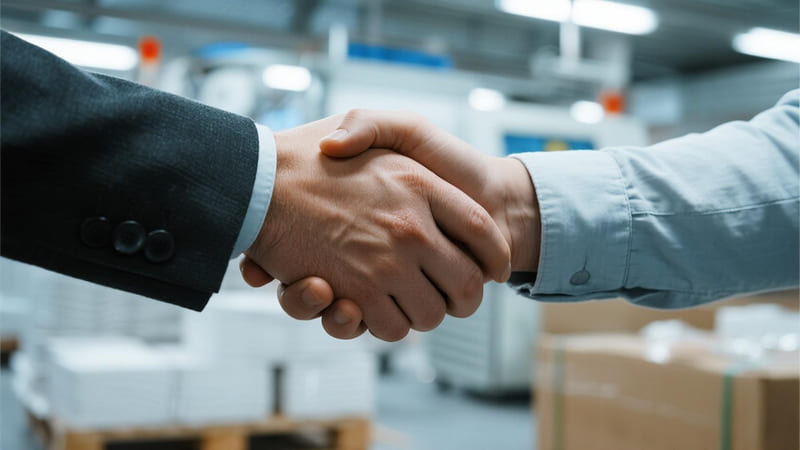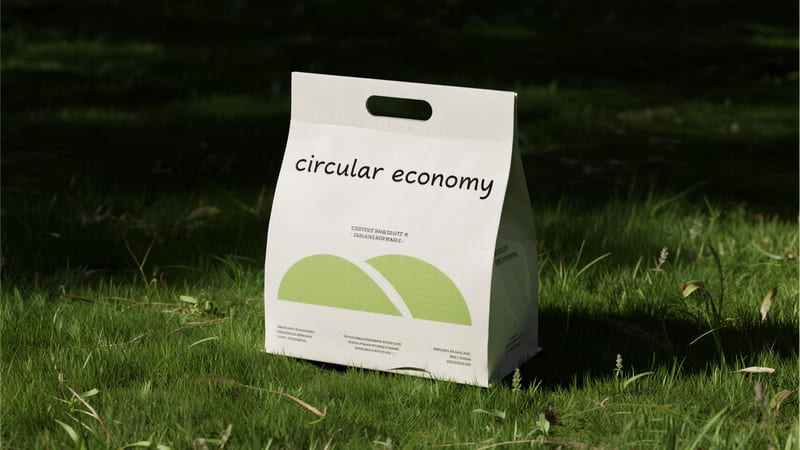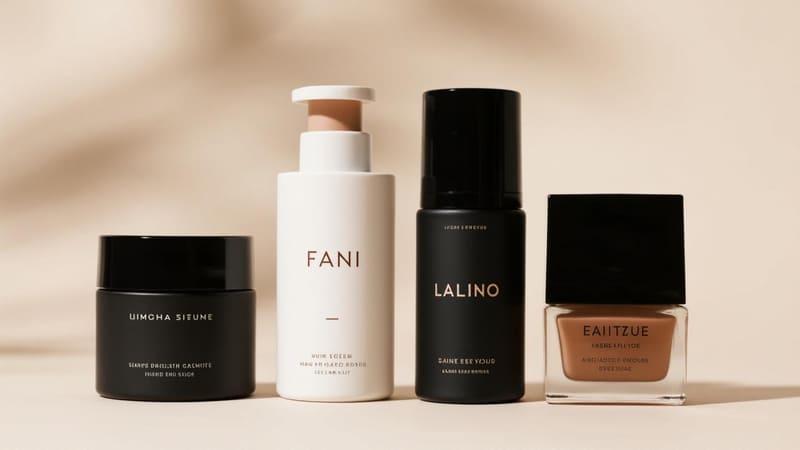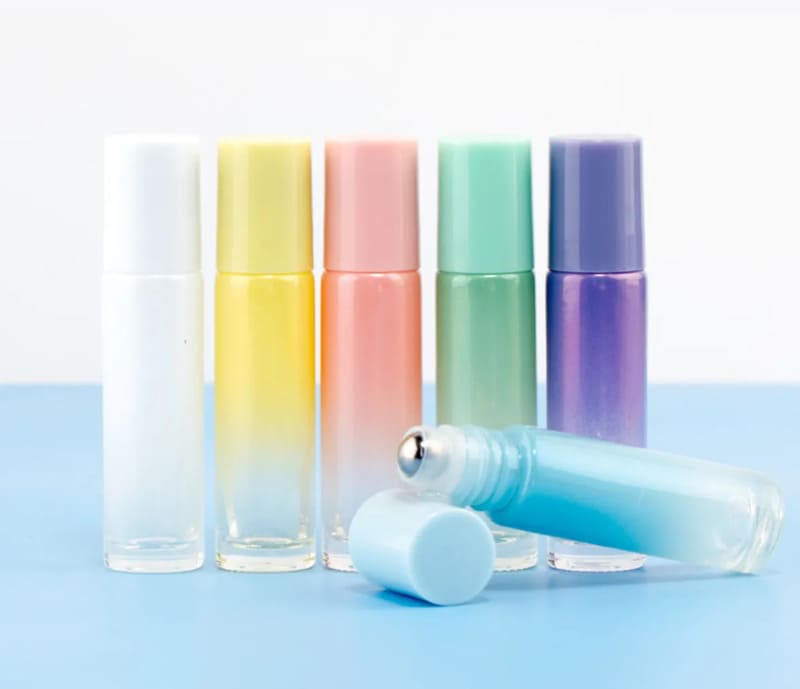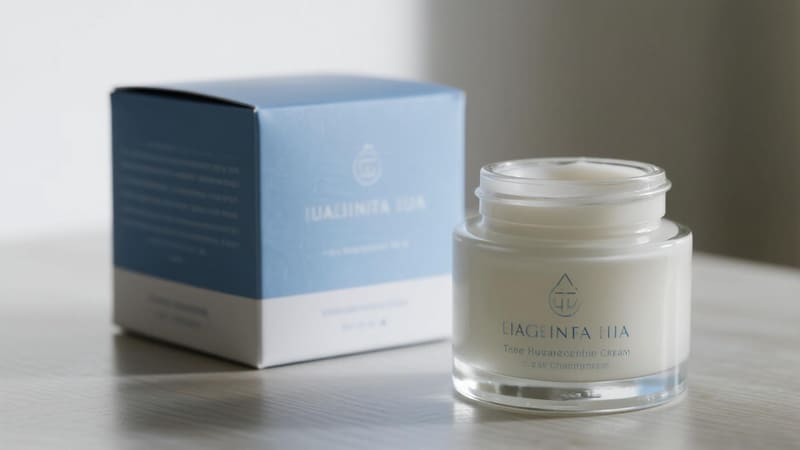Budgeting for cosmetic packaging can be tricky. Costs vary wildly, and it’s hard to know if you’re overspending or sacrificing quality. Understanding the factors that influence price is key.
Cosmetic packaging costs can range from a few cents per unit for simple, high-volume items to several dollars or more for luxury, custom-designed packaging with intricate details and low volumes. Material, complexity, order quantity, and finishes are major drivers.
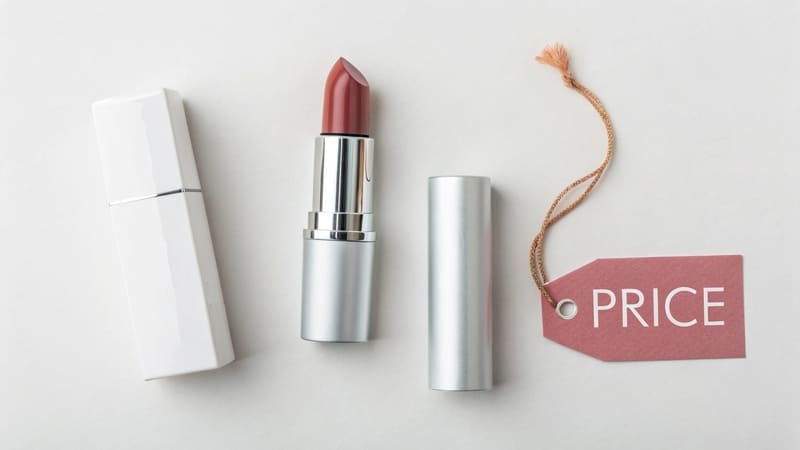
Determining the exact cost of cosmetic packaging isn’t straightforward because so many variables come into play. In my 20+ years at ShineTop, helping brands navigate these costs has been a core part of what we do. Let’s break down what influences the price and how you can approach budgeting for it.
How Much Should My Product Packaging Cost?
Setting a packaging budget without benchmarks can feel like shooting in the dark. You want to impress customers but also need to maintain healthy profit margins. Finding that sweet spot is crucial.
Ideally, your product packaging cost should be between 10% to 40% of your product’s total manufacturing cost, or a smaller percentage (e.g., 1-10%) of the retail price. This varies greatly based on brand positioning (mass market vs. luxury) and product type.
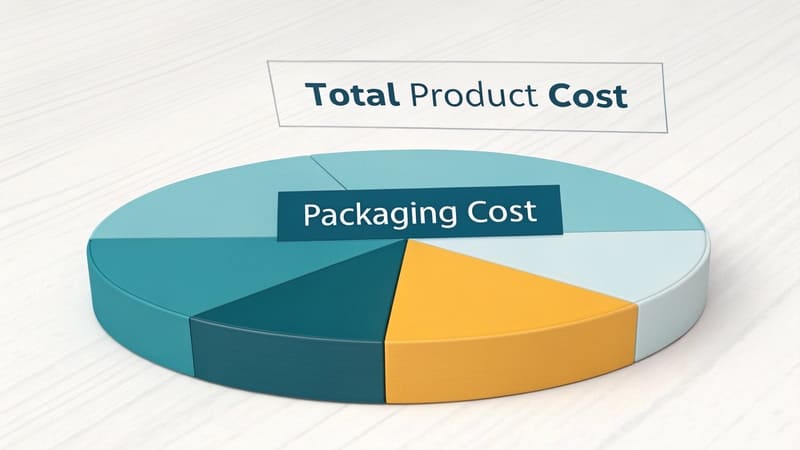
There’s no magic number for how much your packaging should cost, but there are common industry guidelines and strategic considerations. It’s a balancing act between perceived value, brand image, and your overall cost of goods sold (COGS).
General Guidelines and Considerations:
-
Percentage of COGS (Cost of Goods Sold):
- A common rule of thumb for many consumer products is that packaging might represent 10-40% of the total cost to produce the product (formulation + packaging + labor to fill).
- For example, if your total COGS for a cream is $5, the packaging component might be $0.50 to $2.00.
-
Percentage of Retail Price:
- Some brands look at packaging cost as a percentage of the final retail price. For mass-market products, this might be very low (1-5%). For luxury goods, where packaging is a significant part of the brand experience, it could be higher (5-20% or even more in rare cases, especially for perfumes).
-
Brand Positioning:
- Mass Market: Focus is often on cost-efficiency. Packaging needs to be functional and attractive but is usually simpler and made from less expensive materials.
- Masstige (Mass Prestige): A balance between quality and affordability. Packaging might have some premium touches but still needs to be cost-effective.
- Luxury: Packaging is a critical brand statement. Higher costs are expected for premium materials, intricate designs, and elaborate finishes. The unboxing experience is paramount.
-
Product Category:
- Fragrances: Often have the highest packaging-to-product cost ratio due to the perceived value being heavily tied to the bottle and box.
- Color Cosmetics (Makeup): Packaging is very important for appeal and functionality (e.g., compacts, lipstick mechanisms).
- Skincare: Can range widely. Basic cleansers might have simple packaging, while high-tech anti-aging serums often have more sophisticated (and expensive) airless pumps or glass bottles.
Here’s a simplified perspective:
| Brand Tier | Typical Packaging Cost % of COGS (Illustrative) | Typical Packaging Cost % of Retail Price (Illustrative) | Key Focus |
|---|---|---|---|
| Mass Market | 10-20% | 1-5% | Cost-efficiency, functionality |
| Masstige | 15-30% | 3-10% | Balance of quality, appeal, and cost |
| Luxury | 25-40%+ | 5-20%+ | Premium experience, brand statement |
Anna, a cosmetics manufacturer in Thailand, aims for a mid-range packaging cost for her brand. She wants a quality feel that reflects her natural ingredients but needs to keep her products accessible. We work with her at ShineTop to find that balance, perhaps using good quality PET plastic with a nice label and a well-printed box, rather than very expensive heavy glass for all items.
How Much Do Companies Pay for Packaging?
It’s helpful to understand what other companies, big and small, are spending. This provides context, but direct comparisons can be misleading without knowing all the details of their specific products and volumes.
Companies pay anywhere from a few cents to many dollars per unit for packaging. Large companies benefit from massive economies of scale, driving down per-unit costs. Smaller companies or those using highly customized, low-volume luxury packaging will pay significantly more per unit.
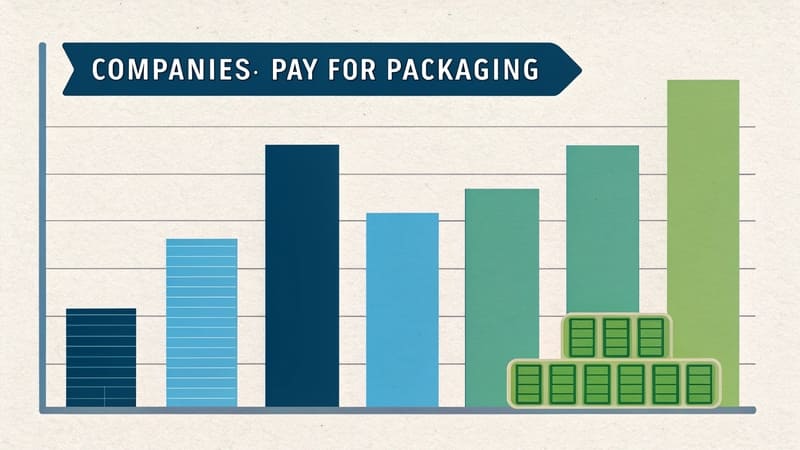
The amount companies pay for packaging is incredibly diverse. A multinational corporation producing millions of units of a lip balm will have a vastly different per-unit cost than a small indie brand launching a niche perfume in a handcrafted bottle.
Factors Influencing What Companies Pay:
-
Order Volume (Economies of Scale): This is one of the biggest factors.
- Large Companies: Order in millions of units. This allows them to negotiate very low prices from suppliers, amortize mold costs over many units, and optimize production runs. Per-unit costs can be pennies.
- Small to Medium Enterprises (SMEs): Order in thousands or tens of thousands. They get better pricing than very small startups but don’t have the same leverage as giants.
- Startups/Artisan Brands: May order in hundreds. Per-unit costs are highest here due to setup fees, smaller production runs, and less negotiating power.
-
Customization vs. Stock Packaging:
- Stock Packaging: Using readily available "off-the-shelf" containers and closures is cheaper. Decoration (labels, printing) adds cost.
- Custom Packaging: Designing unique molds for bottles or jars, or creating completely bespoke box structures, is much more expensive due to tooling costs and development time. However, it offers strong brand differentiation.
-
Material Choice:
- Simple plastics (PE, PP) are generally less expensive than engineered plastics (PMMA/Acrylic) or heavy-walled glass.
- Sustainable options like PCR (Post-Consumer Recycled) materials or bioplastics can sometimes be more expensive than virgin plastics, though prices are becoming more competitive.
-
Complexity and Finishes:
- A simple, one-color printed folding carton is cheaper than a rigid box with multiple foil stamps, embossing, spot UV, and custom inserts. Each additional process adds cost.
-
Supplier Location and Logistics:
- Sourcing from countries with lower manufacturing costs (like China, where ShineTop is based) can be more economical, but shipping and import duties must be factored in.
Mohammed, my client from Iraq, orders in significant volumes (e.g., 25,000 custom drawer boxes). This allows him to access better pricing for these fully customized items than if he were ordering just a few hundred. Even so, because his sets are high-quality and involve multiple custom components (bottle, cap logo, soap, foaming net, box), the overall packaging cost per set is higher than for a mass-produced single item.
How to Calculate the Cost of Packaging?
Accurately calculating packaging costs is essential for pricing your products correctly and managing your budget. It involves more than just the price of the container itself.
To calculate the cost of packaging, sum all direct costs (container, closure, label, box, inserts), add any indirect costs (design fees, mold amortization, shipping, import duties, warehousing), and then divide by the number of units. Always get detailed quotes from suppliers.
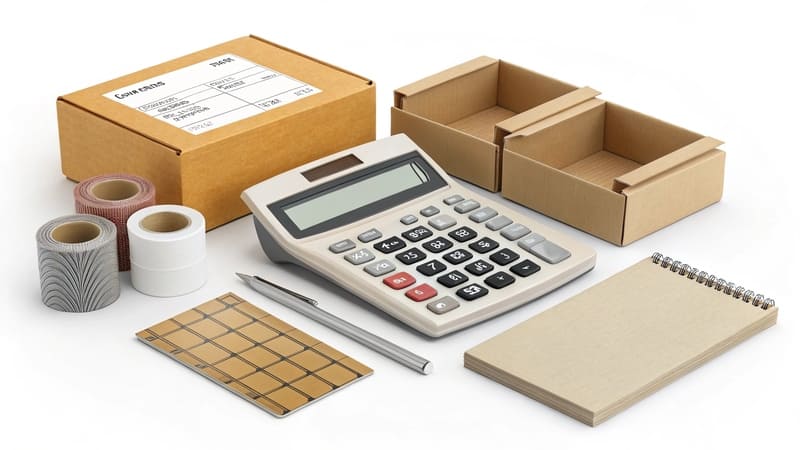
Calculating your true packaging cost requires a thorough approach. You need to account for every element that contributes to the final packaged product landing in your hands.
Steps and Components for Cost Calculation:
-
Identify All Packaging Components: List every single piece.
- Primary Packaging: Bottle, jar, tube, cap, pump, sprayer, dropper, disc, plug, etc.
- Secondary Packaging: Outer box, sleeve, insert, platform.
- Labels: Front label, back label, bottom label, tamper-evident seal.
- Tertiary Packaging (for your internal costing): Cost of master cartons, dividers, palletizing if you’re distributing.
-
Get Per-Unit Costs for Each Component:
- Request quotes from suppliers (like ShineTop) for specific quantities. Prices often decrease with higher volumes (tiered pricing).
-
Factor in One-Time Costs (Amortize These):
- Mold/Tooling Costs: For custom-shaped containers or components. Divide this cost by the total number of units you expect to produce over the mold’s lifetime or a specific period.
- Printing Plate/Die Costs: For custom printing or foil stamping.
- Design Fees: If you hired a designer for the packaging graphics or structure.
-
Add Application/Labor Costs:
- Cost to apply labels (if not done by the container supplier).
- Cost to assemble boxes (if they arrive flat).
- Cost to fill and assemble the final product (though this is often part of overall COGS, not just packaging).
-
Include Shipping and Logistics:
- Shipping costs from the supplier to your facility.
- Import duties, taxes, and customs clearance fees if sourcing internationally.
- Warehousing costs for storing packaging components.
-
Account for Waste/Spoilage:
- It’s wise to add a small percentage (e.g., 1-3%) for damaged or unusable packaging components.
Example Calculation (Simplified):
| Cost Item | Per Unit Cost | Notes |
|---|---|---|
| Bottle | $0.50 | Based on 10,000 units |
| Pump | $0.30 | Based on 10,000 units |
| Label (Printed & Applied) | $0.15 | |
| Custom Box (Printed & Assembled) | $0.70 | Based on 10,000 units |
| Mold Amortization (for bottle) | $0.10 | ($1,000 mold cost / 10,000 units) |
| Shipping & Duties (pro-rated) | $0.05 | |
| Total Estimated Packaging Cost | $1.80 |
This is a simplified example. The more detailed you are, the more accurate your calculation will be. We always provide transparent, itemized quotes at ShineTop to help our clients understand all the cost components.
How Much Do Brands Spend on Packaging?
Knowing industry spending patterns can help you gauge if your own packaging budget is realistic. However, "average" spending can be misleading due to the vast differences between brands.
Brands spend a widely varying percentage of their revenue or COGS on packaging, from under 5% for some mass-market goods to over 20-30% for luxury items, especially fragrances. The industry average is hard to define, but it’s a significant operational expense for all cosmetic companies.
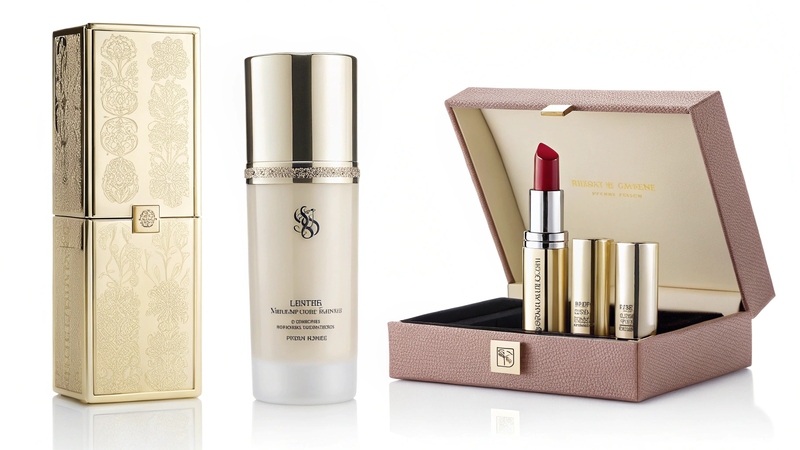
The amount brands spend on packaging is not a fixed number; it’s a strategic decision influenced by their market position, product type, and overall business model.
Spending Patterns and Influences:
-
Luxury Brands (e.g., Chanel, Dior, La Mer):
- Packaging is integral to the brand experience and perceived value.
- They invest heavily in custom designs, premium materials (heavy glass, unique plastics, metal accents), intricate finishes, and elaborate secondary packaging (rigid boxes, detailed inserts).
- The unboxing experience is meticulously crafted.
- Packaging costs can be a substantial portion of the product’s COGS.
-
Masstige Brands (e.g., The Ordinary, Glossier – early days):
- Aim for a high-quality feel and aesthetic appeal but at a more accessible price point.
- May use good quality stock packaging with excellent graphic design and branding, or invest in some custom elements where it makes the most impact.
- Smart material choices and efficient design are key.
-
Mass-Market Brands (e.g., Maybelline, Nivea):
- Focus on functionality, cost-efficiency, and high-volume production.
- Packaging is designed to be attractive on crowded retail shelves and inexpensive to produce.
- Often use standardized plastic containers, simple labels, and folding cartons.
- Economies of scale are critical to keeping per-unit costs very low.
-
Indie/Niche Brands:
- Spending varies hugely. Some opt for very simple, eco-conscious packaging to keep costs down and align with brand values.
- Others invest significantly in unique, artisanal packaging to stand out and create a cult following, even if their volumes are small (leading to higher per-unit costs).
- Anna’s brand in Thailand falls into this category, where she makes conscious choices to balance cost with a natural, appealing aesthetic.
Key Takeaway: Instead of looking for an "average" spend, it’s more useful for brands to determine their packaging budget based on:
- Their target customer’s expectations.
- The desired brand perception.
- The functional requirements of the product.
- Their overall financial model and profit margin targets.
At ShineTop, our mission is to be a reliable packaging partner. This means helping brands of all sizes, from startups to established names, find solutions that meet their aesthetic and functional needs within their budget constraints. We achieve this through our diverse manufacturing capabilities, material options, and design expertise.
Conclusion
Cosmetic packaging costs are influenced by materials, design complexity, order volume, and finishes. While there’s no one-size-fits-all price, understanding these factors and calculating costs thoroughly will help you budget effectively and make informed decisions for your brand’s success.


